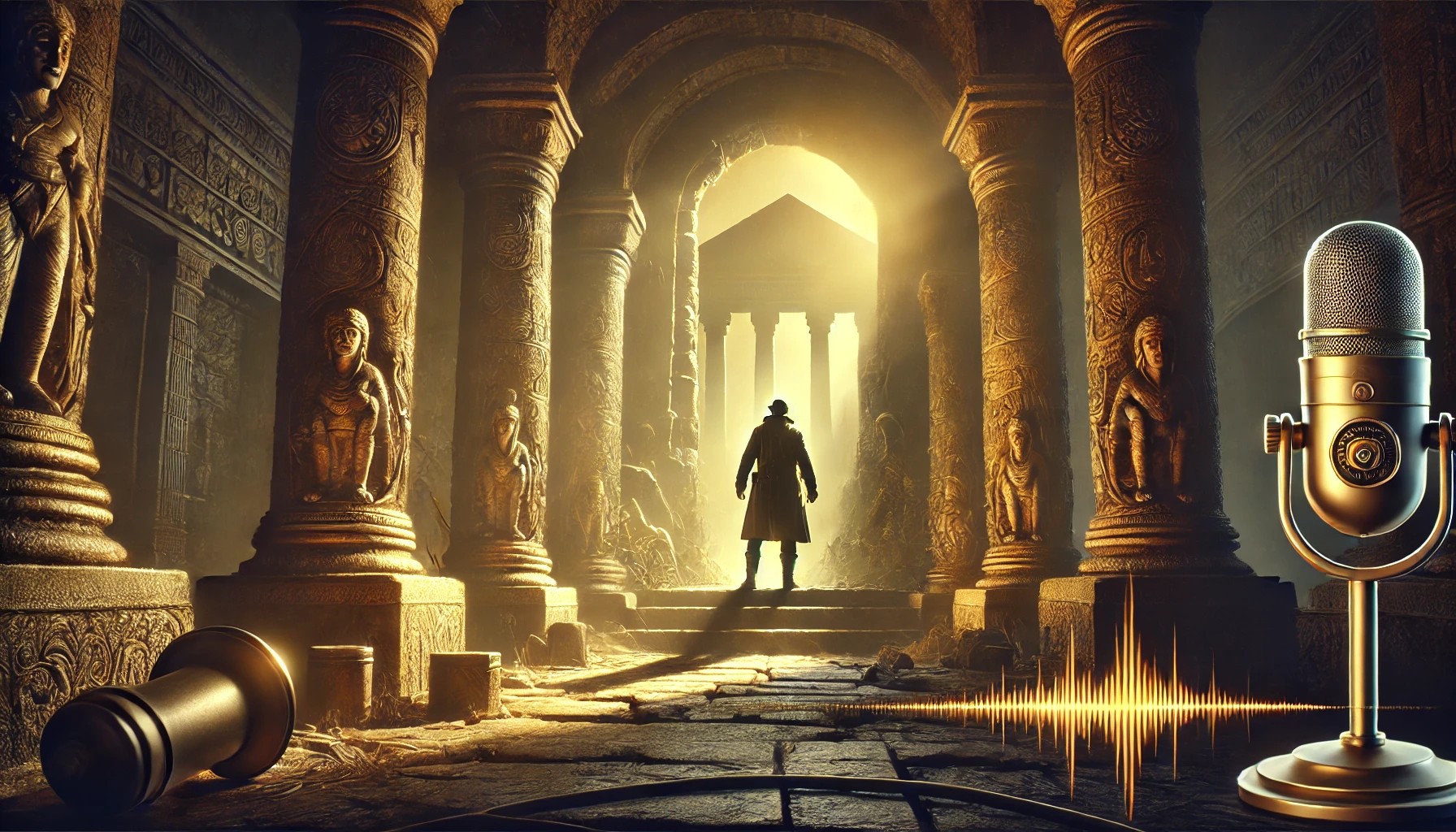Indiana Jones, the adventurous archaeologist with a talent for unearthing ancient secrets, is returning in a project called Indiana Jones and the Great Circle. Although details of this new tale remain carefully guarded, fans and critics alike have been buzzing about an intriguing shift in the franchise: renowned voice actor Troy Baker steps in to capture the spirit of Indy. Even more noteworthy is the vocal endorsement by Harrison Ford, the man who originally embodied the fedora-wearing hero for decades. Ford has gone as far as proclaiming that this project is proof you do not need AI trickery to replicate a performer’s essence, a pointed statement in an era of growing uncertainty over how advanced technology might reshape Hollywood.
The series is widely recognized for cinematic adventures that have enthralled audiences since the 1980s, blending lost artifacts, mythological puzzles, and historical mysteries into rousing sagas. With Disney and Lucasfilm carrying Indiana Jones forward, many expected more visual wizardry and advanced techniques, possibly including AI-driven likeness or voice replication. Such speculation only intensified with the wave of high-profile technology creeping into modern entertainment. Instead, Ford’s comments suggest that this new outing exemplifies how to respect an actor’s legacy through more traditional performance methods. He cites Troy Baker’s approach and the production team’s creative philosophy as reasons not to rely on computer-generated illusions.
A New Chapter in the Legend
Indiana Jones and the Great Circle aims to reintroduce the iconic archaeologist to both longtime followers and fresh audiences. The project’s creators have teased a robust storyline that departs from typical desert escapades, possibly tying in lesser-known cultures and riddles from global mythos. Reports indicate that settings may shift from one continent to another in search of a singular relic or hidden clue. This perspective allows an expanded view of Indy’s world, where he has always balanced intellectual curiosity with a certain roguish charm.
Amid speculation, the large question remains how the story will slot into a timeline that already has multiple Indiana Jones films and references scattered throughout pop culture. Some insiders suggest The Great Circle might exist in a space that parallels well-known arcs—neither ignoring prior events nor overshadowing them with large-scale retcons. The creative leads have indicated that synergy with the broader Indiana Jones lore will be key, hinting at either cameo references to older characters or allusions to previous adventures. Fans who have grown up reciting lines from Raiders of the Lost Ark or quoting Temple of Doom are scrutinizing every detail they can glean from interviews and teases.
Central to this narrative is the notion that the heroic archaeologist, famously portrayed by Harrison Ford in live-action, would appear in a younger or parallel form through a voice-acted portrayal. Typically, one might assume that advanced software or algorithms would replicate Ford’s iconic voice. However, the team behind The Great Circle has opted to entrust the role to Troy Baker’s own talents. This decision, apparently endorsed by Ford himself, aligns with a broader creative stance that they want to capture fresh emotional depth rather than rely on technologically engineered copies.
Troy Baker Takes On the Fedora
Troy Baker stands as one of the gaming industry’s most accomplished voice actors, known for roles like Joel in The Last of Us and Booker DeWitt in BioShock Infinite. His involvement here marks a stepping outside typical AAA video game territory into the realm of a cinematic franchise, albeit in a cross-media format bridging filmic and gaming traditions. While fans of Baker recognize his ability to vanish into varied roles, the question is whether he can embody Indiana Jones without parroting Harrison Ford’s every inflection.
Baker has shared his own excitement and humility at the prospect of inhabiting a character so deeply associated with another performer. Instead of seeking to impersonate Ford, he aims to tap into the core attributes that define Indy: the explorer’s moral compass, his blend of snark and sincerity, and the undercurrent of fear that emerges whenever the stakes become dire. In statements gleaned from interviews, Baker implies that he studied the films to pinpoint what truly drives Indy, from his academic curiosity to his disdain for oppressive forces, without mimicking the original line readings verbatim. He sees value in presenting a hero tested by challenges, comedic mishaps, and moral ambiguity.
Some fans remain cautious about the shift, especially those who believe no one else can ever be the “real” Indiana Jones. Others embrace the fresh energy, especially given that Baker’s track record in voice acting is well known for emotional nuance and dynamic range. The team behind The Great Circle has reiterated that Baker’s addition is meant to extend the property’s vitality, not disrespect or overshadow the role Ford made legendary. Early glimpses and teases have apparently satisfied certain skeptics, though the true test will come with fuller previews that reveal if Baker’s performance can unify comedic timing with that intangible Indy spark.
Harrison Ford’s Candid Views on AI
Hollywood is no stranger to employing digital wizardry. De-aging technology has reshaped older stars into younger versions of themselves, while advanced voice synthesis can resurrect or imitate performers no longer available. Yet, many in the industry, including Harrison Ford, find these developments unsettling. Ford recently told interviewers at IGN and NME that he views The Great Circle as a beacon of how you can honor an actor’s legacy without stepping into ethically murky territory. He emphasized that advanced AI methods—some of which can simulate one’s vocal timbre or facial expressions—risk flattening the spontaneity and “soul” in a performance.
This stance underscores how the 81-year-old star has wrestled with the public’s ongoing demand for digital replicas of beloved heroes. Fans may recall persistent rumors of upcoming projects that would rely heavily on AI to replicate an actor’s presence. Ford himself has been the subject of rumors, with some speculating that Lucasfilm or Disney might use advanced software to generate a younger Harrison Ford cameo in certain sequences. The actor has shown limited enthusiasm for such approaches, reminding audiences and industry figures alike that real artistry typically arises from a person’s capacity for improvisation and emotional unpredictability, qualities that are not easily captured by lines of code.
In referencing Troy Baker’s approach, Ford sees a collaborative solution: letting one actor interpret the role rather than replicating another actor’s exact cadence and tone. He likens it to the way different musicians can perform the same composition, each imparting their own style without losing the piece’s essence. Although the outcome may feel initially jarring for fans expecting Ford’s baritone, it preserves an organic spirit rarely achieved by mechanical forging of sound samples.
How This Reflects a Broader Trend in Entertainment
The Indiana Jones saga is only one high-profile example in a larger cultural conversation about AI’s place in modern media. Particularly within Hollywood, the fear is that advanced technology, capable of forging nearly indistinguishable voices and facial expressions, could override the creativity of actual humans. Actors have expressed alarm that studios might be tempted to sign away lifelike replicas of their voices or mannerisms, effectively owning their digital doppelgängers. This creeping anxiety materialized in the wave of union negotiations and strikes that highlighted issues of AI infiltration.
Ford’s remarks about preserving an actor’s “soul” underline the heart of this debate: does a purely digital model, built from archived footage and audio, truly capture the complexity that emerges from a living, breathing performer? A film or game can certainly benefit from special effects, but what about the intangible creativity that arises in unscripted moments? The Great Circle’s reliance on Baker’s interpretation stands as a manifesto against automated replication, a statement that big Hollywood properties can still champion genuine performance.
Projects from Star Wars spin-offs to a few recent Marvel features have toyed with cameo appearances that rely heavily on digital illusions. Some fans cheer the novelty, while others balk at the possibility of a future in which, for instance, a deceased actor is resurrected via computer. By looking to a performer of Baker’s caliber, The Great Circle’s creators are making the argument that new renditions of iconic heroes need not revolve around technology that replicates old performances. Instead, it can revolve around the synergy between a skilled cast, a cohesive script, and a director willing to let the actor’s personal craft shine.
Excitement for the Future of Indy
At this juncture, many fans find themselves torn between nostalgia for the original Indiana Jones and anticipation of a reimagined approach that can propel the character into new territory. The Great Circle aims to merge time-honored relic hunts and comedic beats with contemporary storytelling frameworks, possibly bridging the gap between cinematic spectacle and interactive experiences. The synergy between a filmic sense of scope and advanced game-like narratives might refresh the franchise, ensuring that Indy’s brand of swashbuckling doesn’t stagnate.
Still, the project’s real allure may lie in showing how legacy franchises can evolve without betraying their roots. Should Baker succeed in forging a depiction of Indiana Jones that evokes both the warm humor and the intellectual adventurousness that fans associate with the character, it could set a precedent for how other long-standing series handle recasting or character expansions. Harrison Ford’s candid endorsement of Baker’s involvement, coupled with his rejection of AI-driven solutions, further amplifies interest. If the new Indiana Jones can dazzle audiences while steering clear of synthetic shortcuts, it may reinforce a growing sentiment among cinephiles that technology is best used to augment, not supplant, human talent.
Though public footage and official statements remain limited, the chatter around The Great Circle highlights a hunger for creative risk-taking within big franchises. Observers hope that the imaginative spark historically associated with Indiana Jones will flourish anew, unencumbered by concerns that the actor’s presence might be artificially conjured. The supportive words from Ford suggest a willingness to let younger or different actors step into the archaeologist’s boots, provided the result retains that ineffable spark of authenticity. Audiences now eagerly await more reveals, uncertain whether the final outcome can live up to decades of cinematic heritage but hopeful that the magic of Indy can thrive outside the realm of AI illusions.
Much remains to be unveiled about the script, the characters, and how The Great Circle will shape the ongoing legacy of the adventurous professor. Yet, the project’s stance on casting and performance, championed by Ford’s remarks, lays out a hopeful path for an industry grappling with rapid technological change. If the new film successfully demonstrates that real actors can reinterpret beloved icons without sacrificing the soul that endears them to millions, Indiana Jones’s next quest may prove as groundbreaking as his original run, revealing once more why the fedora, the whip, and the human spirit behind them have lasted so long in popular imagination.

